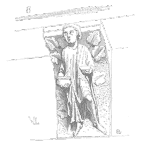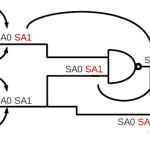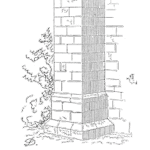
What readers will learn in this article.
- How pneumatic actuators work.
- Air pressure requirements for proper operation.
- Air supply piping installation requirements.
- Air quality requirements for long life operation.
Your Reliability Engineering Professional Development Site

What readers will learn in this article.
by Fred Schenkelberg 3 Comments

I just noticed the new 2018 ASQ CRE Body of Knowledge had been posted on the ASQ site. The new BoK will be in effect for CRE exams as of January 2018. Thus, we have six months to adjust to the new body of knowledge.
This is part 1 of a multipart review of the new BoK. Here we’ll look at the parts that those preparing for the exam will not have to master or review. There are 10+ topics dropped completely or in part from the BoK.
In future articles, we’ll review what has been added, what has been changed (a review), and how to best prepare for exams based on the new BoK. Plus, we can look over past BoK’s to understand where reliability engineering practice is today.
In part, the logic is these sets of tools (topics) that are not widely used by working reliability engineers. In some cases, I agree, and in others, I don’t. Let’s look at the eight topics not found in the upcoming CRE BoK. [Read more…]

Memory circuits store 1’s and 0’s for you so that you can retrieve them later. The 1/0’s can represent data or instructions.
Today, no computing device operates without some memory. Memory devices store pictures, music, documents. How many USB (Unified Serial Bus) memory sticks do you have scattered on your desk?
Semiconductor memory comes in many flavors: Dynamic Random Access Memory (DRAM), Static Random Access Memory (SRAM), Read Only Memory (ROM), Erasable Programmable Memory (EPROM), NAND/NOR Memory (a.k.a. Flash), Solid State Drive (SSD). Without power volatile memories like SRAM and DRAM lose their stored values. Non-Volatile memories retain their stored value when power is absence. [Read more…]
by Fred Schenkelberg 1 Comment

Did you hear what they said? Or, were you busy loading for your next verbal barrage?
As my mother would remind me, one should listen twice of often as speaking. Something about the ratio of ears to mouths in the population. I have to agree with her, that one can learn a lot by listening.
Listening may not seem to be a skill that one needs to master. Yet, how often have you walked away from a meeting where one or more participants obviously were not listening? How often are points repeated in an effort to be heard?
Being able to listen, listen well, can be honed and improved. A focus on being a better listener will improve your ability to communicate and influence as a reliability engineer. It has benefits beyond our reliability work, too. [Read more…]

I had a conference call this morning with some potential clients in regard to rolling out a RCM Blitz™ effort. The sad thing about Reliability Centered Maintenance is the reputation the tool has acquired over the last 40 years has one of two faces.
The sad, tragic and more popular face is that if the Resource Consuming Monster. The reputation that RCM is too detailed, that it takes too long, and that by the time you finish your analysis there are no recourses and there is no money left for implementation. According to a survey conducted on ReliabilityWeb.com nearly 70% of all RCM implementations fail, with statistics like this, it is a wonder the tool still exists. [Read more…]

Imagine a world where the Maintenance Planner can quickly and easier find all the material information for each job. Even those that do not yet have a job plan. Dreams or reality? Reality. This reality is found within operations all over the world and you can have it too. How can you achieve a level of efficiency with your Planner and have all materials information readily available? With Bills of Material.
A Bill of Material or BOM as it is commonly referred to, is a list of material needed to support the operations and maintenance of an asset or component. It includes a part description, part number and how many are required on a specific component or assembly. It may also include a reference number that refers to a sub assembly drawing. [Read more…]
by Mike Sondalini Leave a Comment

Written instructions make it clear.
Written directions given to maintenance tradesmen to reduce the chance of making an error and to reduce time spent looking for information are called job procedures or job instructions. [Read more…]
by Greg Hutchins Leave a Comment

Guest Post by Paul Kostek (first posted on CERM ® RISK INSIGHTS – reposted here with permission)
You’ve completed your project’s Risk Management Plan and now you can move forward with project execution because all of the project’s risks have been identified what can go wrong? Well plenty. It’s easy to get caught up in weekly (daily) reviews of the identified risks, tracking status (are the boxes going green, yellow, oh no red?). [Read more…]
by Fred Schenkelberg 4 Comments

Sometimes the reaction rate of a process relies on two stresses. For chemical reactions, temperature seems to influence the rate of the reaction. Yet, other stresses such as humidity or voltage may also play a significant role.
H. Eyring suggested a model that assumes the contribution of each stress on the reaction rate is independent; thus one could multiply the respective stress contributions to the rate of reaction.
The Eying model provides a means to account for the contributions of temperature and another stress when modeling the time to failure of select failure mechanisms. [Read more…]
by Anne Meixner Leave a Comment


Semiconductor Integrated Circuits (ICs) can have millions of digital circuits which can translate to billions of transistors.
I know these numbers can be intimidating, but I assure you the challenges of testing ICs started in the mid-late 1970’s. Lots of effort has been put into Electronic Design Automation (EDA) systems and Design for Test (DFT) techniques to manage the development and application of digital circuit testing.
In the beginning these software programs and DFT techniques used the Stuck at Fault Model. [Read more…]
by Dennis Craggs Leave a Comment

Here is an example of a common engineering development task. A design engineer needed a life test plan for a switch verification in a safety system. We jointly developed a plan by taking a system view of the component function, considered corporate and regulatory requirements, customized it to the supplier’s test capabilities, executed the plan, and made design changes to remove product defects. [Read more…]
by Fred Schenkelberg Leave a Comment

Your peers, team mates, and management want to understand your writing. They want to quickly get your point, find supporting information, and take action.
As a reliability engineer, you write proposals, plans, and reports. You write problem statements, failure analysis findings, recommended process improvements, and much more.
You write to document a process or plan. More often you write to encourage others to take action.
Writing clear, concise missives the incite action is a hallmark of a good reliability engineer. You are doing technical writing.
You can learn to write well. [Read more…]
by Doug Plucknette Leave a Comment

The following article came about from an on-line conversation I had with a follower who responded to an article I had written on the differences between Leaders and Managers. Her hope was that someday soon someone in a leadership position at her company would recognize the harm her boss was causing and how miserable he had made the lives of those who worked for him.
So as promised here is my take on working for a bully boss!
If you’re lucky you only work for one in your lifetime. [Read more…]

Imagine an operation in which there are no lost time accidents, OEE is increasing and there is a plan to address the skills shortage. These sites do exist and chances are they using procedure based maintenance. Procedure Based Maintenance is simply having all maintenance activities documented in a procedure. These procedures are then followed step by step when conducting breakdown, corrective and preventative maintenance. [Read more…]
by Adam Bahret Leave a Comment

Many product programs ( actually all) are on a tight schedule. When Accelerated Life Testing (ALT) get’s it’s place in the process it is another mouth to feed. ALT is not a short process. Each round of testing typically takes weeks, and the results may drive design changes that prescribe additional testing. It is common to want to get the ALT process going as quickly as possible. In this haste the primary wear-out failure modes and it’s driving stresses are confidently stated, a model is created, and the test is started.
 Ask a question or send along a comment.
Please login to view and use the contact form.
Ask a question or send along a comment.
Please login to view and use the contact form.